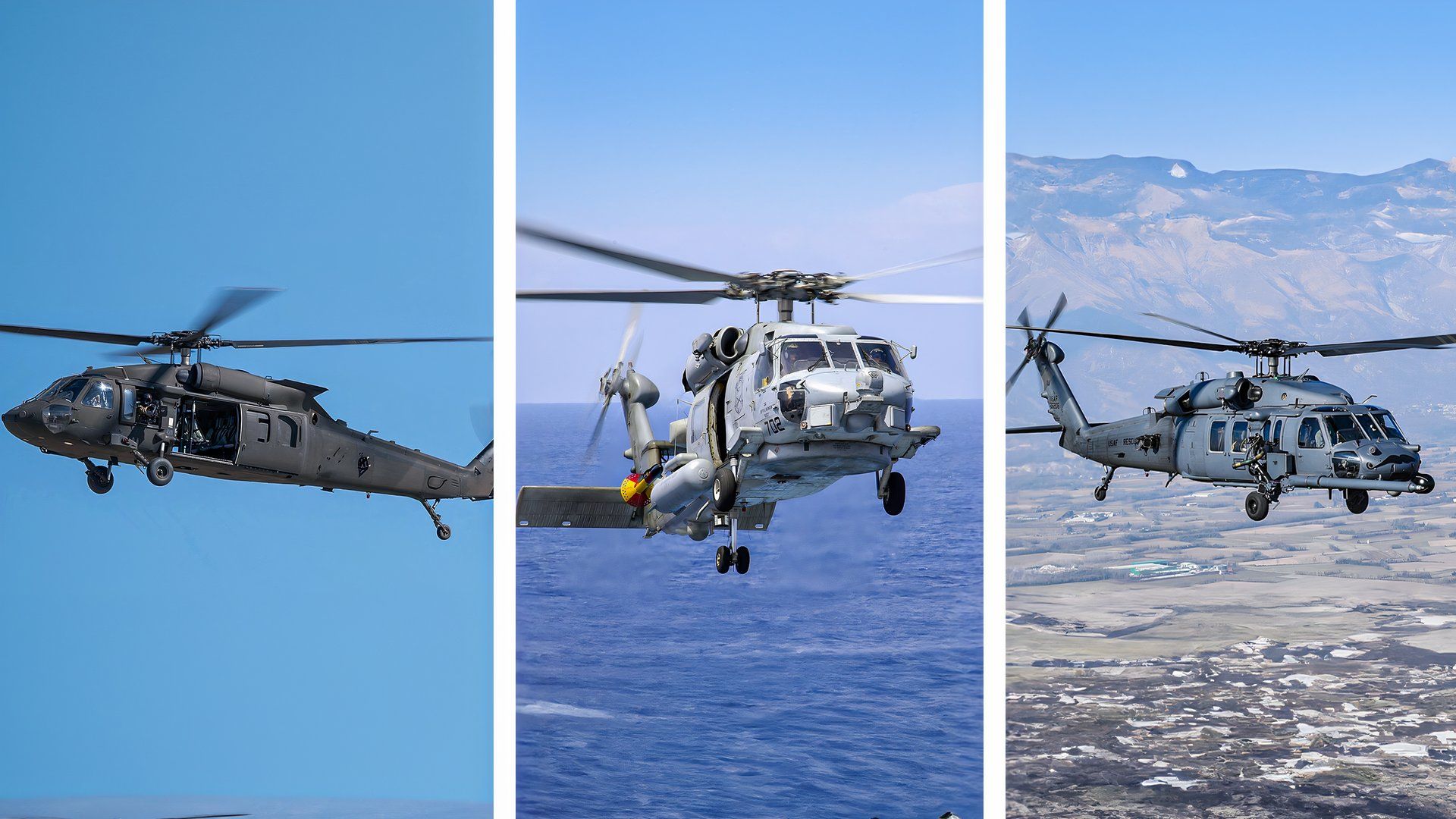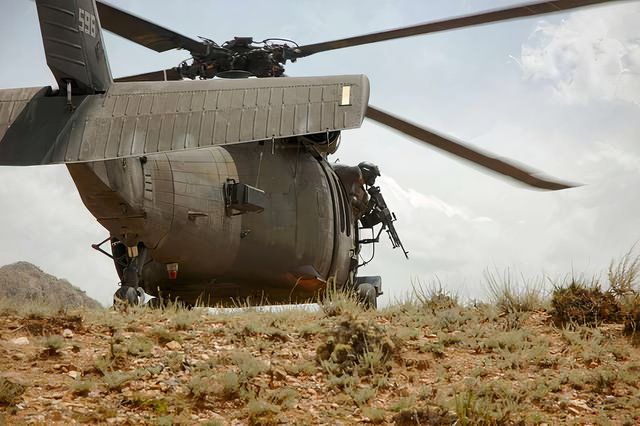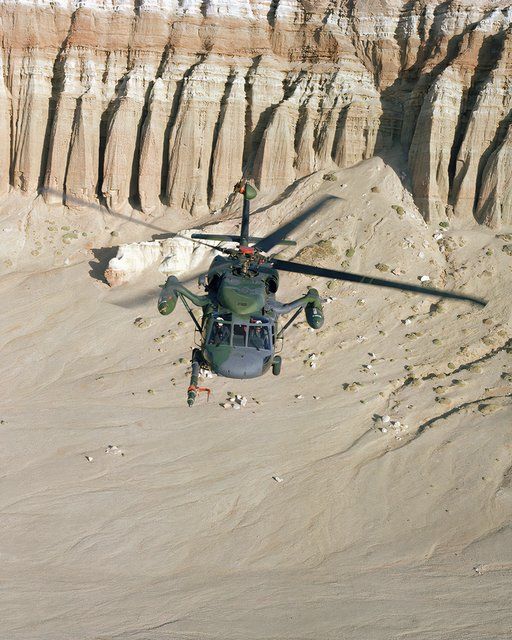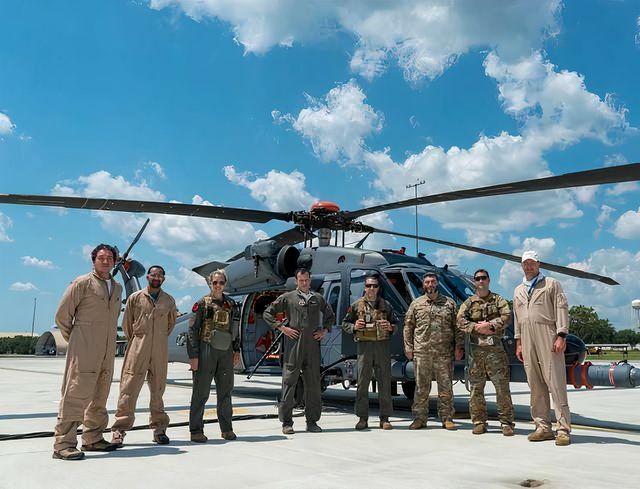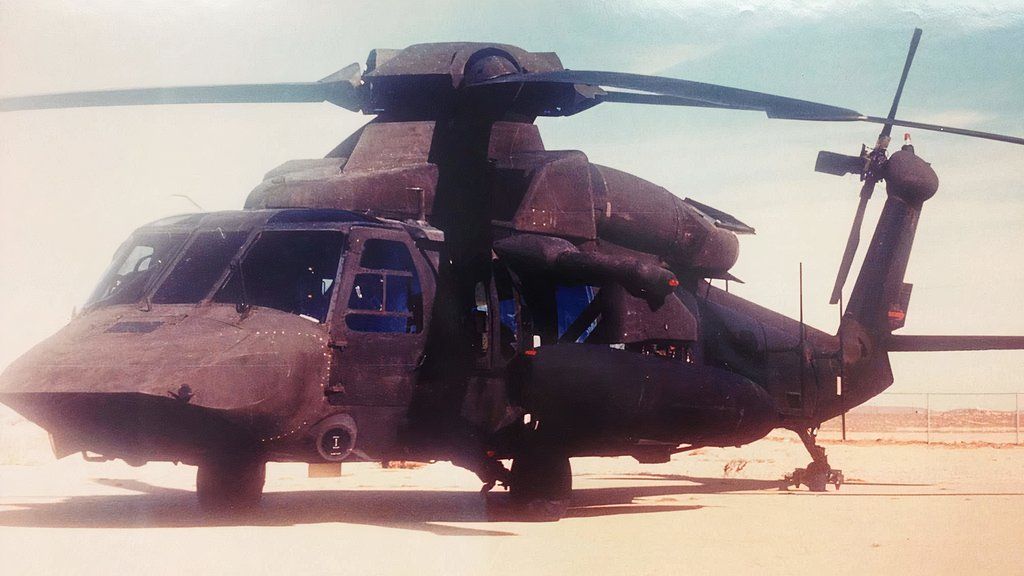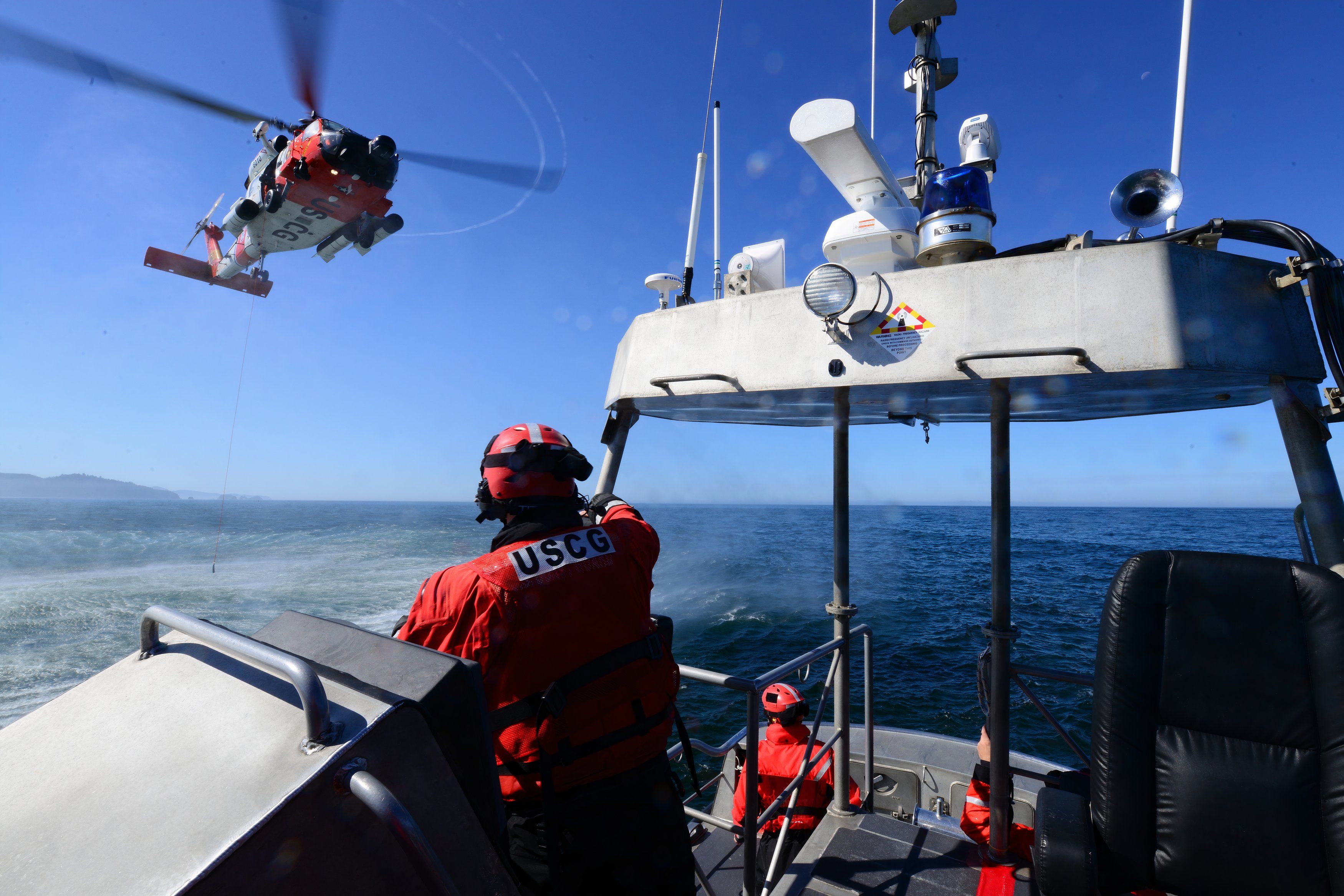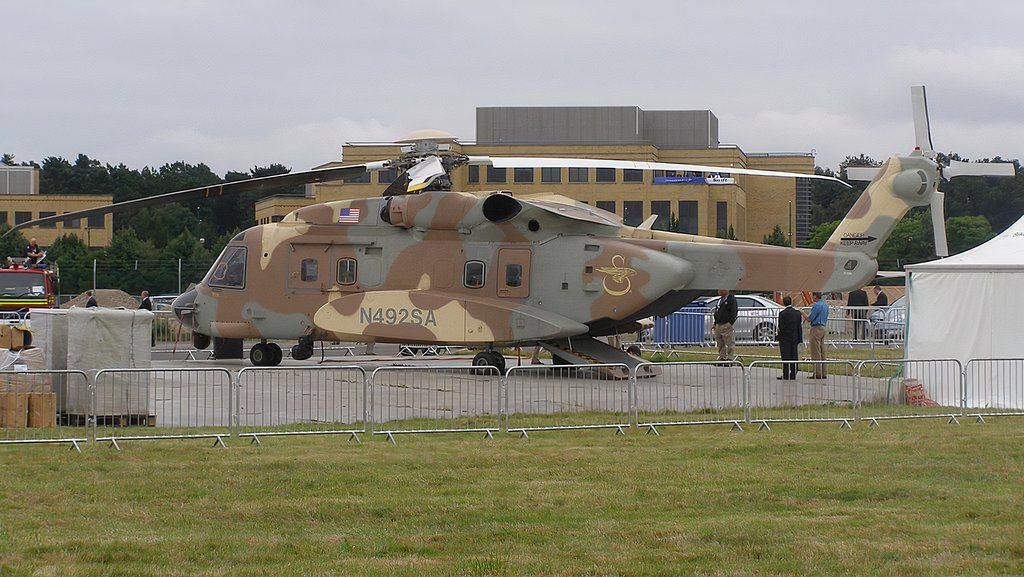Summary
- Sikorsky’s Hawk variants excel in combat, rescue, and logistics operations.
- UH-60 Black Hawk is widely used for various missions in global conflicts.
- Sikorsky’s innovative helicopters have been adapted for diverse specialized missions.
Sikorsky has created different Hawk variations, each geared for a distinct military function. The United States Forces widely employ most variants, and each Hawk model has proven vitality in combat, rescue, and logistics operations. Sikorsky is definitely an aviation legend, especially in helicopter innovation.
A Century of Sikorsky Helicopters
Igor Sikorsy founded The Sikorsky Manufacturing Corporation on Long Island, New York, in 1923. The firm ultimately became The Sikorsky Aviation Corporation. In 1929, he bought land in Stratford, Connecticut, to establish the company. The firm became a division of United Aircraft Corporation, which merged into United Technologies Corporation in 1975. Sikorsky Aircraft celebrated its 100th anniversary in 2023.
The first helicopter acquisition of the Indian Air Force (IAF) was 3 Sikorsky S-55™. One remains at the Indian Air Force Museum in New Delhi—India purchased the third S-55 for $137,500 in 1957.
Sikorsky Aircraft was acquired by
Lockheed Martin
in 2015. Lockheed Martin is a global security and aerospace company headquartered in Bethesda, Maryland. The acquisition expanded Lockheed Martin’s core business into helicopter production. However, Sikorsky retained its original headquarters. Paul Lemmo is the current president of Sikorsky.
“It would be right to say that the helicopter’s role in saving lives represents one of the most glorious pages in the history of human flight.” — Igor Sikorsky.
The Legendary UH-60 Black Hawk
The UH-60 Black Hawk helicopter is the U.S. Army’s primary medium-lift utility transport and air assault aircraft. It is twin-engined and has a single 4-bladed rotor and tail rotor. The UH-60 is a member of the Sikorsky S-70 family. The Aircraft Corporation developed a utility helicopter for the US Army during the 1970s, replacing the UH-1 Iroquois.
Photo: Lt. Col. Eric Albertson | Defense Visual Information Distribution Service
The Black Hawk can carry eleven combat troops and 3 crew members, or fourteen fully equipped combat soldiers at a maximum capacity. It can perform air, marine operations (AMO), and land missions to evacuate wounded personnel and resupply troops during contingency operations. These powerful helicopters can carry all necessary equipment and personnel for law enforcement and rescue operations.
It has been widely used in global conflicts, including Operation Desert Storm and Operation Iraqi Freedom. It is known for its versatility in combat and special operations. It is actively used in the US, Israel, Saudi Arabia, Japan, Poland, Australia, Turkey, Egypt, South Korea, Colombia, and others.
Sikorsy’s Army Pave Hawks
The HH-60G Pave Hawk helicopter is a modified version of the Army Black Hawk helicopter, which is used for day or night personnel recovery operations in hostile environments during battles. The rotor machine is also used for medical evacuation, disaster response, humanitarian assistance, and security cooperation/aviation advisory. The helicopter features an upgraded communications and navigation suite, an automatic flight control system, night vision goggles, color weather radar, and an engine/rotor blade anti-ice system.
National Aeronautics and Space Administration (NASA
uses the rotor machine to respond to emergencies during space shuttle launches and missions. The HH-60G has engaged in many contingencies, including Operation Just Cause, Operation Desert Storm, and Operation Allied Force. The helicopter has also been deployed in Afghanistan, Iraq, and Libya, assisting individuals by conducting personnel recovery and evacuations.
Photo: Ssgt W.L. Cooper | The US National Archives
USAF Sikorsky Night Hawk
The HH-60D Night Hawk, a significant development in search and rescue helicopter technology, was not transitioned into operational reality to become the cornerstone of the US Air Force’s CSAR capabilities. It is armed and has the usual cabin seats and pylon-mounted fuel tanks.
The HH-60D development was halted, and the US Air Force pursued the HH-60G Pave Hawk program instead. Both versions conduct day or night operations in hostile environments and can perform peacetime operations such as civil search and rescue, international aid, and counter-smuggler operations.
Photo: Master Sgt. Tristan McIntire | Defense Visual Information Distribution Service
A Hawk by Another Name: The USAF Jolly Green II
The HH-60W “Whiskey” or Jolly Green II is a new helicopter designed to meet the US Air Force’s long-range and high-threat requirements. It expands on the Black Hawk’s versatility by doubling internal fuel capacity, providing a robust weapons suite, and integrating defensive systems and sensors. The Whiskey maintains commonality with all UH-60M engines and dynamic systems.
The US Air Force program of record calls for 113 Green II helicopters to replace the aging Pave Hawk. The Green II offers improved survival, an advanced defensive suite, flexible weapon systems, and an integrated mission system. It meets all US Air Force requirements, including a 195 nautical-mile (224 miles) combat radius and best-in-class survivability.
The Most Mysterious Of USAF Hawks
The HH-60U Ghost Hawk is considered one of the most mysterious variants used for security and defense in the US Air Force. It is being used in the Test Center’s Homey Airport, also known as ‘Groom Lake’ or ‘Area 51‘. Visitors mentioned that the HH-60U flies over overly curious individuals from the restricted area of the airfield using sound and light signals.
The Ghost Hawk is also known for secretly delivering injured personnel carried out at the airfield to hospitals. It is equipped with a large combat Forward-Looking Infrared system (FLIR). However, it has never been recorded with any weapons, but its presence suggests it could be quickly equipped with wings with outer hardpoints and heavy weapons, including the AGM-114 ‘Hellfire’ missile.
Photo: TMZ | wikimedia.org
The Stealthy Hawk Serving Special Ops Teams
The Stealth Black Hawk or “Silent Hawk” was a secretive technology that originated during the Cold War era, when the US ran a series of “black” programs to ease the task of Special Operations teams penetrating Soviet installations. The Silent Hawk’s possible shape was influenced by the Low Radar Cross-Section (LRCS), which suggested a shape more like that of an F-117 than a more modern stealth aircraft.
It is also known as the MH-X as it is a highly classified and modified version of the Sikorsky Black Hawk, developed by the US military with stealth features for covert operations. Although details about this helicopter remain primarily secret, it gained international attention during the Operation Neptune Spear raid on Osama bin Laden’s compound in 2011.
Additional specialized Hawks for fire and rescue missions
The MH-60 Jayhawk is a medium-range helicopter specializing in search and recovery. It is powered by two GE T700-GE-401C turboshaft engines, capable of reaching a maximum speed of 180 knots (112 MPH) and a range of 700 nautical miles (806 miles). The Jayhawk specializes in overwater operations.
The US Coast Guard currently operates more than forty-two MH-60s. The MH-60T is used for search and rescue missions at nine US Coast Guard and ATC Mobile Air Stations. It is planned to replace the MH-65 Dolphin in all rotary-wing Coast Guard Air Stations, most of which have undergone the Jayhawk conversion since 2008.
Photo: Mass Communication Specialist Jasmine Suarez | Defense Visual Information Distribution Service
The S-70 Firehawk is a special-mission helicopter platform developed by Sikorsky. It is based on the S-70/UH-60 “Black Hawk” twin-engine transport frame. The latest variant is the S-70i, manufactured under license by PZL Mielec of Poland. It is a specialized fire-fighting derivative with an external rescue hoist off the starboard side of the fuselage.
At hundreds of brush fires and medical rescues, the Sikorsky FIREHAWK has proven to simply be the best all-in-one aerial firefighting weapon.” Los Angeles County Fire Department Former Fire Chief Daryl L. Osby
The Firehawk has a Rockwell Collins-designed cockpit, Night-Vision (NV) equipment, a tactical communications system, and a searchlight for low-light-level and nighttime operations. The aircraft has a twin-engine side-by-side layout and a four-bladed main rotor assembly. Power is provided by 2
General Electric
T700-701D series turboshaft engines, each generating 1,940 horsepower.
Photo: MilborneOne | wikimedia.org
The Private Super Hawk
The H-92 Super Hawk is a medium-lift twin-engine helicopter, an evolution of the S-70 Black Hawk. It was first delivered to Petroleum Helicopters Inc (PHI) in September 2004 and has been ordered by various international companies. In October 2005, the S-92 received certification from the
FAA
for flight in known icing conditions and
EASA
. It has multiple variants, including the civil transport version or military variant H-92 Super Hawk.
The S-92 has a metal and composite frame with a wider four-bladed articulated composite main rotor blade with a wider and longer radius than the S-70 Black Hawk. The rotor system is damage-tolerant and has a crash-worthy fuel system to enhance safety. The S-92 has an active vibration system for comfortable flight, and acoustic levels are well below certification requirements.

